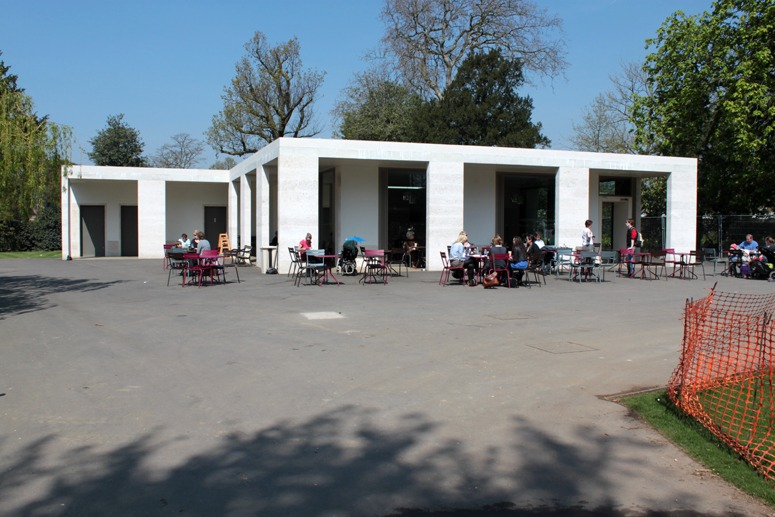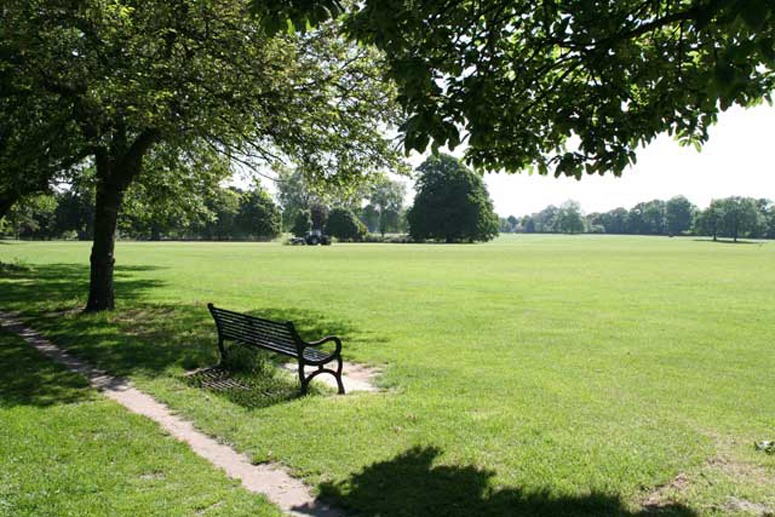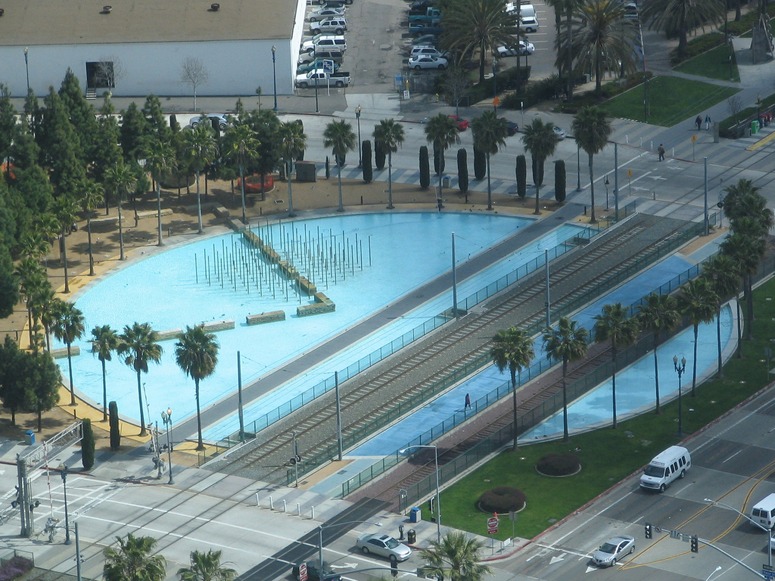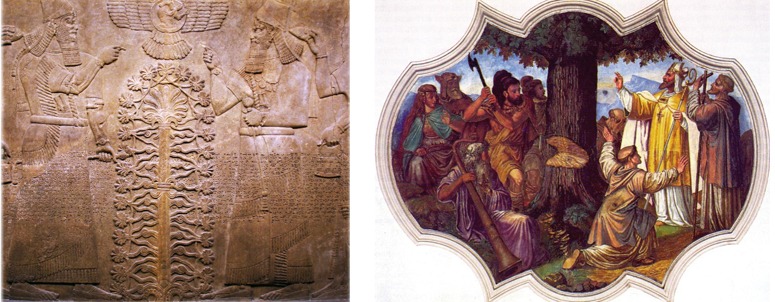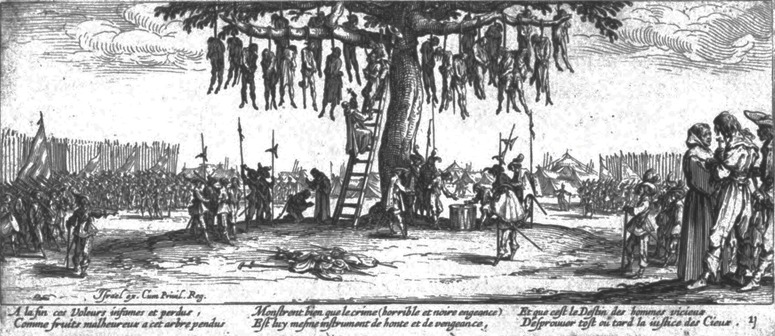I have always had a soft spot for Chiswick House and Park: my Mum used to play there; it is a key project in William Kent’s design progress; it is the only park or garden in the world where a uniformed official has told me that ‘you can ride your bicycle here if you want to’. So it was a pleasure to find that the current refurbishment of the park by English Heritage and the Chiswick House and Gardens Trust includes what may have been intended as a romantic new ‘Garden of the Mind’. The gravel was dredged from the North Sea. The bitumen binder was sourced far beneath the region in which the world’s first gardener worked. The garden furniture comes from far-away China. The manhole covers are tastefully handled. The architecture reminds me of Mies’ Barcelona Pavilion. We must congratulate the dashing young boss of English Heritage (Simon Thurley) and wonder if his own fair hand was behind this garden. Conveniently, it has good toilets and is within spitting distance for visitors to Lord Burlington’s Chiswick Villa. But, for me, the Garden of the Mind is nothing but a sea of bitmac (though a layer of gravel has been applied since the photo was taken). Chiswick Park is a key project in the architecture and landscape architecture of the eighteenth century world. Its sparkling new cafe deserves a sparkling new cafe garden – and Mies showed the way at Barcelona. English Heritage once ran a highly unsuccessful Contemporary Heritage Gardens project, because it was applied on inappropriate sites. The cafe in Chiswick Park could still be a great site for a great project. [See note on heritage garden weddings]
Has London gotta lotta bottle? – or too many garks?

The Urban Dictionary gives these meanings for ‘bottle’:
1)Transparent Container, usually for liquids that is narrow, circular-based, mostly handle-less and with an ever-narrowing top, where the opening is found.
2) To hit someone on the head with a glass bottle, smashing the bottle in the process.
3) Guts or determination
4) Female with no volouptous features, in comparison to 1)
So ‘Yes’ for its urban space. But ‘No’ for its many garks.
Postmodern landscape architecture by Peter Walker and Partners?
Sometimes, I wonder if landscape architects have borrowed my diagram of the postmodern style and scanned it into their computers. But since this design for a reflecting pool and fountains at Children’s Park and Pond in San Diego, California (by Peter Walker) won an an ALSA award in 1998 it would be better to ask me if I used it when drawing my style diagram – in 1999. The answer would be ‘No’ and I would classify the design as ‘geometrical postmodernism’ rather than ‘ecological postmodernism’ or ‘functional postmodernism’. The Peter Walker website puts it like this: ‘ An outdoor space for the Children’s Museum, this project transforms the traditional elements of a park — turf, flowers, benches, shade, and water — into whimsical abstractions. The vast horizontal expanse of a two hundred-foot wide pond is reinforced by a circle of tall Mexican fan palms. A fountain animates the pool with a grid of Rainbird sprinkler heads. The monumental pond also articulates the intersection of the park and the linear Martin Luther King Jr. Promenade, as it is literally traversed by the tracks of both light rail system and train.’ – and the key word is ‘whimsical’.
Picadilly Gardens in Manchester, by EDAW, also resembles my diagram but the design was done in 1998.
Global warming and cultivation of the grape vine in England
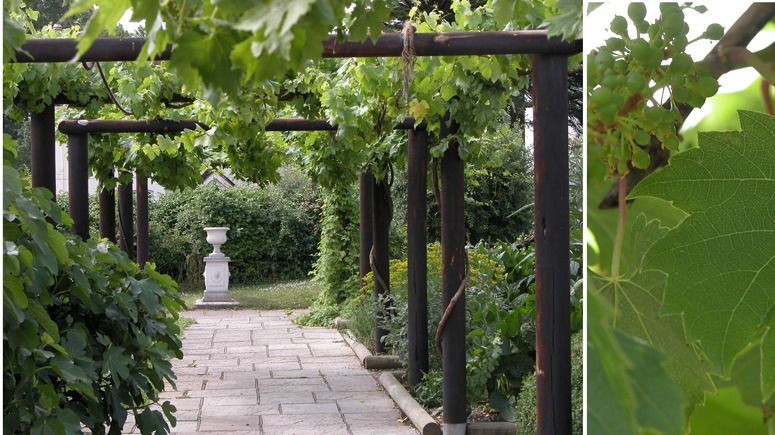 When John Harvey became President of the Garden History Society, in 1984, the great medieval historian suggested bringing back the grape vine as an ornamental plant. He explained that: ‘From very early times until the eighteenth century the vine was one of our chief garden plants, quite apart from attempts to make wine in England or to obtain dessert grapes – though both these enterprises had considerable success. As a climber, against walls or used to cover arbours and tunnels, the vine is outstandingly beautiful and, in several varieties, completely hardy in most of Britain. This is brought home to us when we realize that one of the largest and oldest vines ever grown was in the open air in the High Street of Northallerton, surely one of the coldest and draughtiest towns in England. The grape-vine was, and could be again, one of the greatest beauties of our gardens.’ (Journal of the Garden History Society, Spring 1984, p.5). The seemingly ever-warmer summers with which Global Warming threatens to bless England reinforces Harvey’s suggestion: Bring Back The Grape Vine.
When John Harvey became President of the Garden History Society, in 1984, the great medieval historian suggested bringing back the grape vine as an ornamental plant. He explained that: ‘From very early times until the eighteenth century the vine was one of our chief garden plants, quite apart from attempts to make wine in England or to obtain dessert grapes – though both these enterprises had considerable success. As a climber, against walls or used to cover arbours and tunnels, the vine is outstandingly beautiful and, in several varieties, completely hardy in most of Britain. This is brought home to us when we realize that one of the largest and oldest vines ever grown was in the open air in the High Street of Northallerton, surely one of the coldest and draughtiest towns in England. The grape-vine was, and could be again, one of the greatest beauties of our gardens.’ (Journal of the Garden History Society, Spring 1984, p.5). The seemingly ever-warmer summers with which Global Warming threatens to bless England reinforces Harvey’s suggestion: Bring Back The Grape Vine.
The vine was probably introduced to England by the Romans and the image (courtesy Gauis Caecilius) is of a vine pergola at Fisbourne Roman Palace.
The Easter Island Path to Perdition could show where humanity is heading
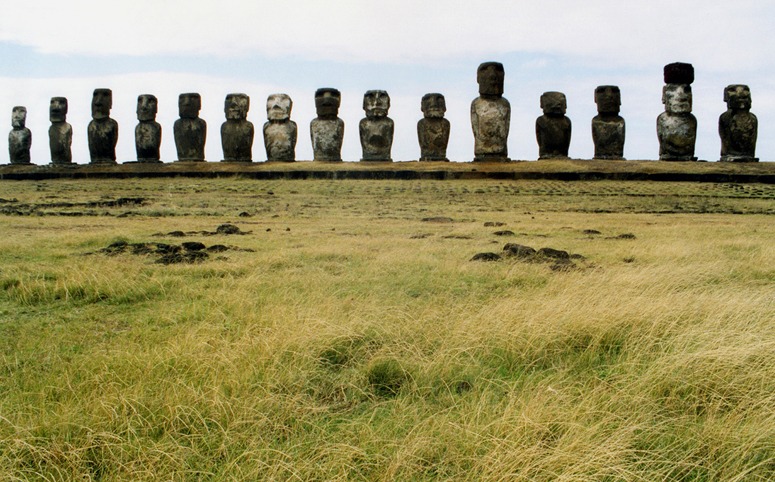 Following the below comments on Attitudes to life, death and trees in western culture and ‘civilization’, I thank Anoldent, for his photograph and his account of the Fifteen Moai on Easter Island: ‘Moai were status symbols. The more you had and the bigger they were, the greater your village’s status. Unfortunately, moving them around the island required many trees, and when the last trees were cut on the once heavily forested island, the topsoil blew away, the islanders could no longer build fishing boats, or even escape the ensuing famine. Wars erupted and the culture collapsed. An environmental cautionary tale. The island is still largely treeless.’ On a larger scale, too many humans think this way: ‘the more you have the better you are’: more rooms, more people, more buildings, more cars, more economic growth. But for humans who inhabit an island or a planet, aiming for more may result in less. Let’s call it ‘the Easter Island Path to Perdition’, and let’s be sufficiently optimistic to believe that the ‘civilization’ of cities will be replaced by a sophisticated landscape urbanism.
Following the below comments on Attitudes to life, death and trees in western culture and ‘civilization’, I thank Anoldent, for his photograph and his account of the Fifteen Moai on Easter Island: ‘Moai were status symbols. The more you had and the bigger they were, the greater your village’s status. Unfortunately, moving them around the island required many trees, and when the last trees were cut on the once heavily forested island, the topsoil blew away, the islanders could no longer build fishing boats, or even escape the ensuing famine. Wars erupted and the culture collapsed. An environmental cautionary tale. The island is still largely treeless.’ On a larger scale, too many humans think this way: ‘the more you have the better you are’: more rooms, more people, more buildings, more cars, more economic growth. But for humans who inhabit an island or a planet, aiming for more may result in less. Let’s call it ‘the Easter Island Path to Perdition’, and let’s be sufficiently optimistic to believe that the ‘civilization’ of cities will be replaced by a sophisticated landscape urbanism.
Attitudes to life, death and trees in western culture and 'civilization'
The illustrations show a Tree of Life (above left) in ancient West Asia, the felling of a Sacred Tree by St Boniface (Thor’s Oak, above right) and a Hanging Tree during the 30 Years War (below).
What do the illustrations tell us about changing attitudes to trees in western civilization? Here are some possibilities:
- the ancients saw trees (and forests) as symbols of the natural forces which control the world
- the early Church regarded tree-worship as idolatrous, because there is only one true God
- both trees and people were destroyed in the religious wars of the seventeenth century
In clearing and ‘managing’ what is left of the world’s forest cover we may be marching in the path of the Easter Islanders. At present, the most densely wooded countries are Finland (86% of the total land area), Sweden (57%) and Austria (47% ). Australia, suprisingly, has 20.1% forest cover. The European countries with the least forest are Ireland, with 8% of the land as forested and the United Kingdom with 11%.

